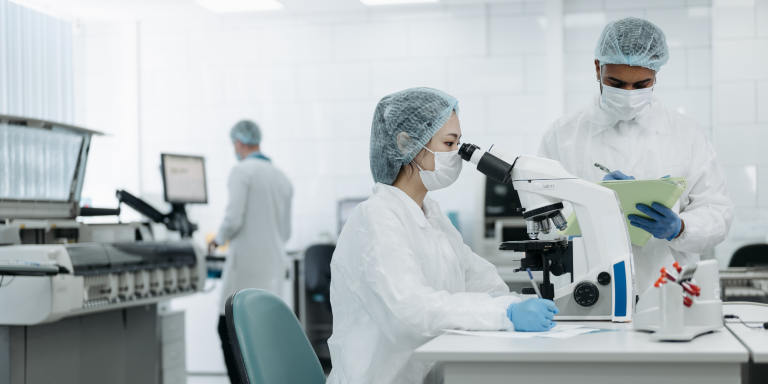
Multidisciplinary scientific networks, created at the initiative of the Ile-de-France Region, the Major Interest Domains (DIM) aim to federate Ile-de-France research teams around shared themes. Nine new areas of major interest have been approved and will receive funding for the period 2022-2026. Among them is the DIM “Human-centered artificial intelligence in the Paris Region (AI4IDF), led by the INRIA Center in Paris”.
The Ile-de-France region aims to support and promote excellence in education, research and innovation in the region. It intends to increase the scientific influence of Ile-de-France laboratories and their attractiveness to foreign researchers and teacher-researchers and facilitate the transfer of knowledge and technology. Thus, in 2018, it launched a plan to become the major artificial intelligence hub in Europe.
The region has created the DIMs to bring research to its territory, on themes deemed to be promising and around which a whole network of universities, higher education institutions, research laboratories and companies is formed. It has supported 13 IMGs between 2017 and 2021, providing them with financial assistance of €110 million.
Ile-de-France, Europe’s leading science and technology region
The DIMs were created to:
- Build research and innovation networks in Paris Region that focus on emerging topics with very high scientific and economic potential,
- Strengthen the attractiveness of Paris Region laboratories by providing scientific and technological expertise and state-of-the-art equipment,
- Improve the visibility of research teams in the Paris region in Europe and internationally,
- Promote the development of knowledge and the dissemination of research results, including to the general public and young people,
- Strengthen the links between research and the economy by promoting technology transfer and innovation.
DIMs with the 2022-2026 label
For the period 2022-2026, 9 new IMGs have been selected by the Regional Scientific Committee following a call for projects to which 33 candidates had responded. They will receive 20 million euros in 2022 and more than 100 million euros at the end of the 5 years.
- Human-centered artificial intelligence in Île-de-France (AI4IDF) led by the INRIA Center in Paris
The 4 main artificial intelligence institutes (DATAIA, Hi! PARIS, PRAIRIE and SCAI1) propose to create an alliance to structure and animate the community and offer industrial and international partners a unified vision.
Designated as a Convergence Institute under the Plan d’Investissements d’Avenir 3, the DATAIA Institute brings together interdisciplinary research skills in data science, artificial intelligence and society on the Saclay plateau in the Paris region. PRAIRIE is an institute that brings together several public partner institutions: the University of Paris, PSL, the Pasteur Institute and two organizations: CNRS and Inria. It is part of the 4 3IA. Hi! PARIS was launched by HEC Paris and the Institut Polytechnique de Paris (IP Paris). This interdisciplinary research and teaching center is dedicated to AI and Data Science. The Sorbonne Center for Artificial Intelligence (SCAI) is one of the French references in research. The scientific program of the AI4IDF project aims to deepen the knowledge in artificial intelligence by keeping the human at the center of the concerns.
- BioConvergence (BIOTECH), led by the University of Paris
The BioConvergence network has 2 projects: to develop a digital innovation network and to strengthen the field of biotherapies.
- Cognition and Brain Revolutions Artificial Intelligence, Neurogenomics and Society (C-BRAINS), led by Inserm
The objective of the C-BRAINS project is to remove the technological, conceptual and organizational barriers that hinder the progress of research to solve the complexity of the brain.
- One Health 2.0 (DOH 2.0), led by Inserm
The objective of the DIM “One Health 2.0” is to promote innovative work integrating aspects of human health, environmental health and animal health, targeting infectious agents.
- Immunotherapies, Autoimmunity and Cancer (ITAC), led by Institut Gustave Roussy
The ITAC network wishes to position itself at the interface of 3 fields in life sciences and health: cancer, rare diseases and immunology.
- MaTerRE (advanced eco-responsible materials), led by the École supérieure de physique et de chimie industrielles de la Ville de Paris (ESPCI)
MaTerRE aims to develop tools for the accelerated discovery of advanced materials to support sustainable development in the Paris region.
- ORIGINES, led by the Observatoire de Paris-PSL
The ORIGINES project is aimed at space and amateur astronomy actors.
- Patrimoines Matériels (PAMIR), led by the CNRS
PAMIR wishes to build innovative collaborative modes of operation by providing equipment and shared platforms based on innovative concepts.
- Quantum Technologies in Paris Region (QuanTiP), led by CNRS
In an approach combining applied mathematics, computer science, physics, chemistry, materials and engineering, the QuanTiP project addresses all the major themes of the field.
Translated from La région Ile-de France labellise 9 domaines de recherche et d’innovation majeurs









